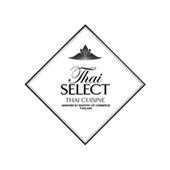Ingredients used in making Yellow Curry
If we are asked to name one of our most favoured cuisines from around the world that suits the taste buds of the old and the young alike, then we can’t help but adore the Thai cuisine for all the right reasons. The food is not only sufficed with extraordinary taste and colours because of the fine blend of otherwise heterogeneous ingredients but the health benefits that form an inevitable part of every bowl. If you are planning to visit one of the Islington restaurants, then we would advise you to give the Thai yellow curry a try and thank us later. Following are a catalogue of ingredients that make the yellow curry what it is today.
- Shallots
Shallots belong to the family of onions, except they look a bit different from the conventional ones. Their characteristics resemble the garlic more than an onion; formed in clusters with multiple cloves and a pointy head, shallots are the pioneer of Thai food. The unique taste of sweet and sour in Thai food is derived essentially from the flavour of shallots. Furthermore, these eleme5nts grant a sweet smell to the yellow curry distinct to the nose and are packed with rich nutrients such as vitamins and proteins thereby making it an impeccable ingredient rich in antioxidants and anti-ageing elements.
- Lemongrass
Yellow curry is incomplete without lemongrass stalks; the most versatile ingredient in creating Yellow curry, the intriguing after taste comes from this element. The taste is that of sublime lemon that hits you like an air of refreshment amidst the pool of spices. The use of lemongrass is common around the countries Asia, Africa, and Australia as they are the epitome of healthy nutrients.
- Coriander seeds
You must have heard of the coriander leaves in Asian countries, especially in India, but the coriander seeds are an exception in the descent of Apiaceae. The origin of this ingredient is usually assigned to the Northern parts of America and Southern Europe. Every bit of the coriander plant can be implemented in your recipe; however, for the yellow curry, in particular, the dried seeds are put to use.
- Kaffir lime leaves
The kaffir lime leaves belong to native citrus fruit commonly found in the lands of Southern China and Southeast Asia. They are accompanied by a strong citrus fragrance, which when introduced to the curry along with the lemongrass furnishes the twist that had so long been missing. Kaffir leaves assure to bring a catalogue of health benefits along with it including relief from prolonged stress, makes the skin healthy and lustrous and keeps infections away.
- Ginger and garlic
There is hardly any curry in the world that can be curated without a hint of garlic and ginger. These two ingredients are considered to be the best multi-functional ingredients around the globe and endowed with extra brownie points for its natural source. Garlic and ginger together open doors for healthy bones and teeth along with enhanced resistance to keep away minor infections. Moreover, their rich taste and strong taste makes it impossible to hold to not dive into that yellow curry for long.
The yellow curry forms a crucial portion of the menu at the Thai restaurant known as Thai Square situated at the heart of London. Come visit and try this authentic delicacy to procure the authentic taste of Thailand!





